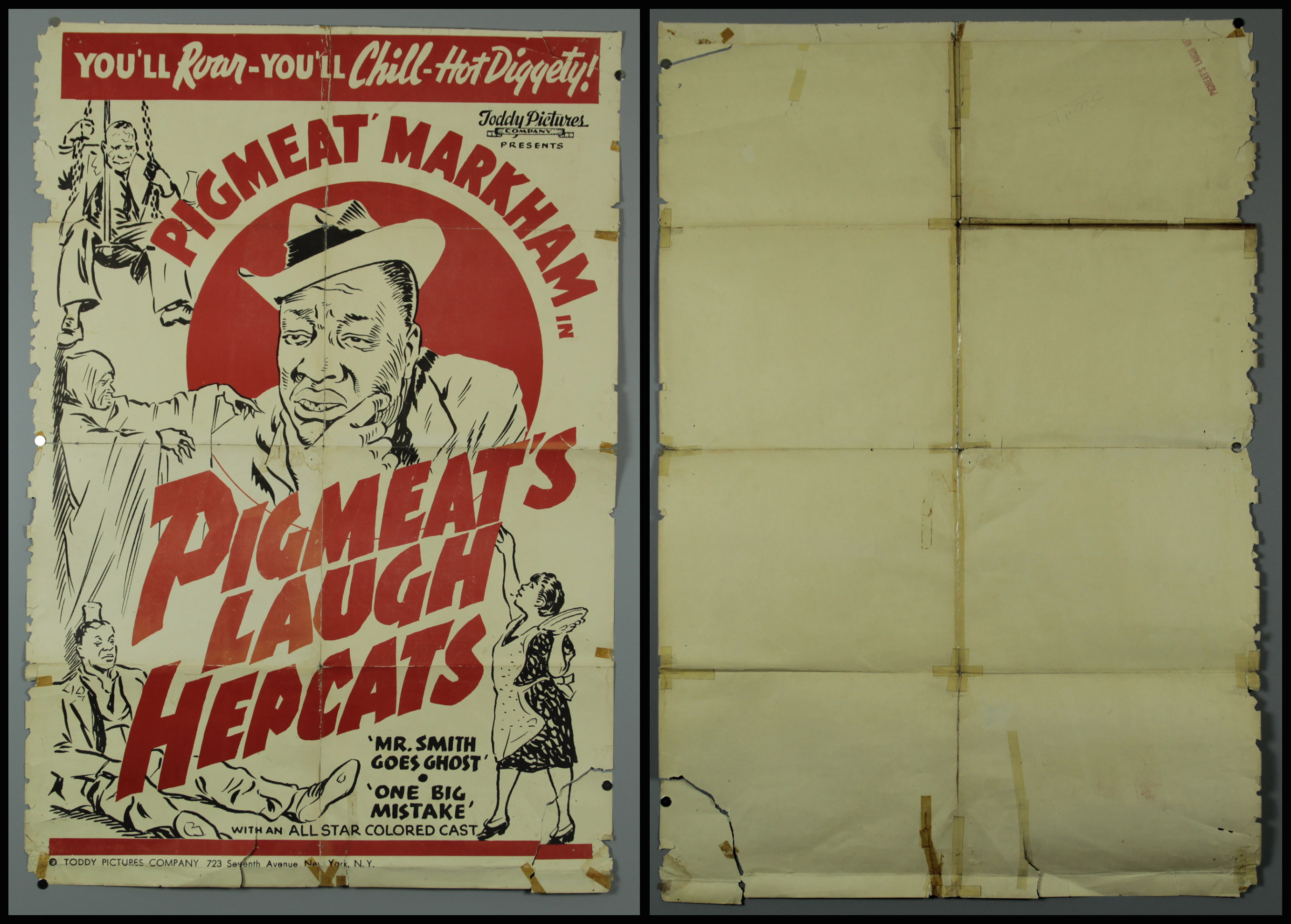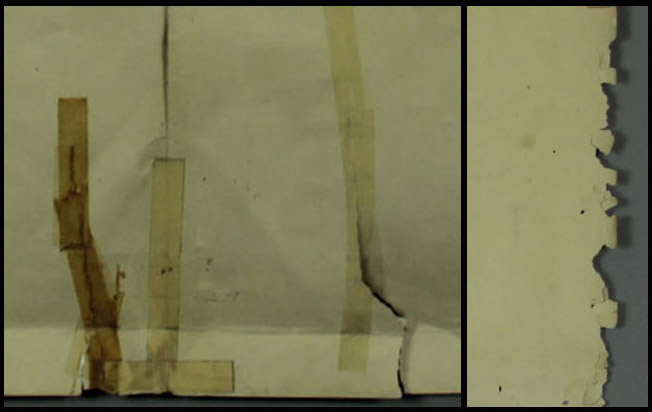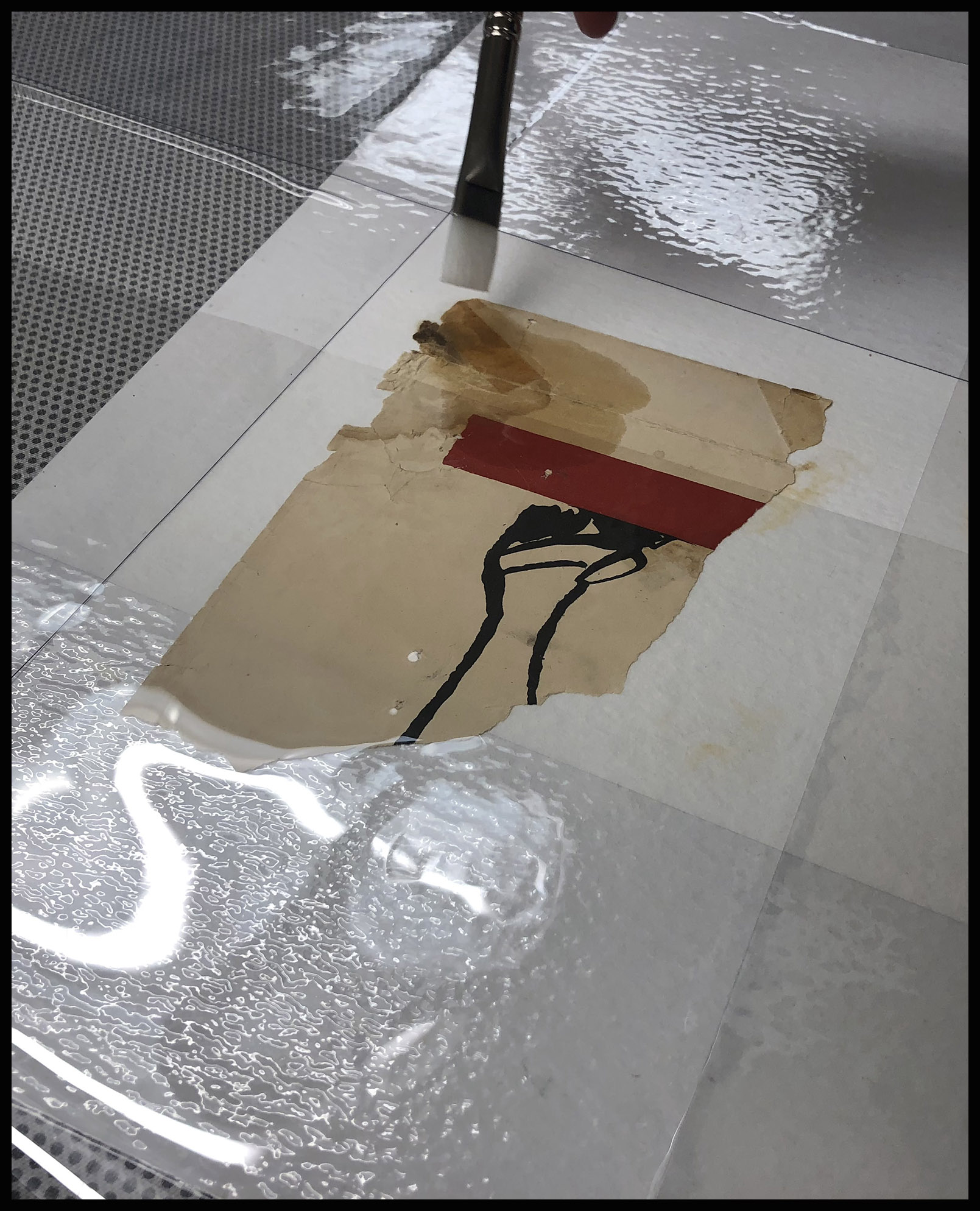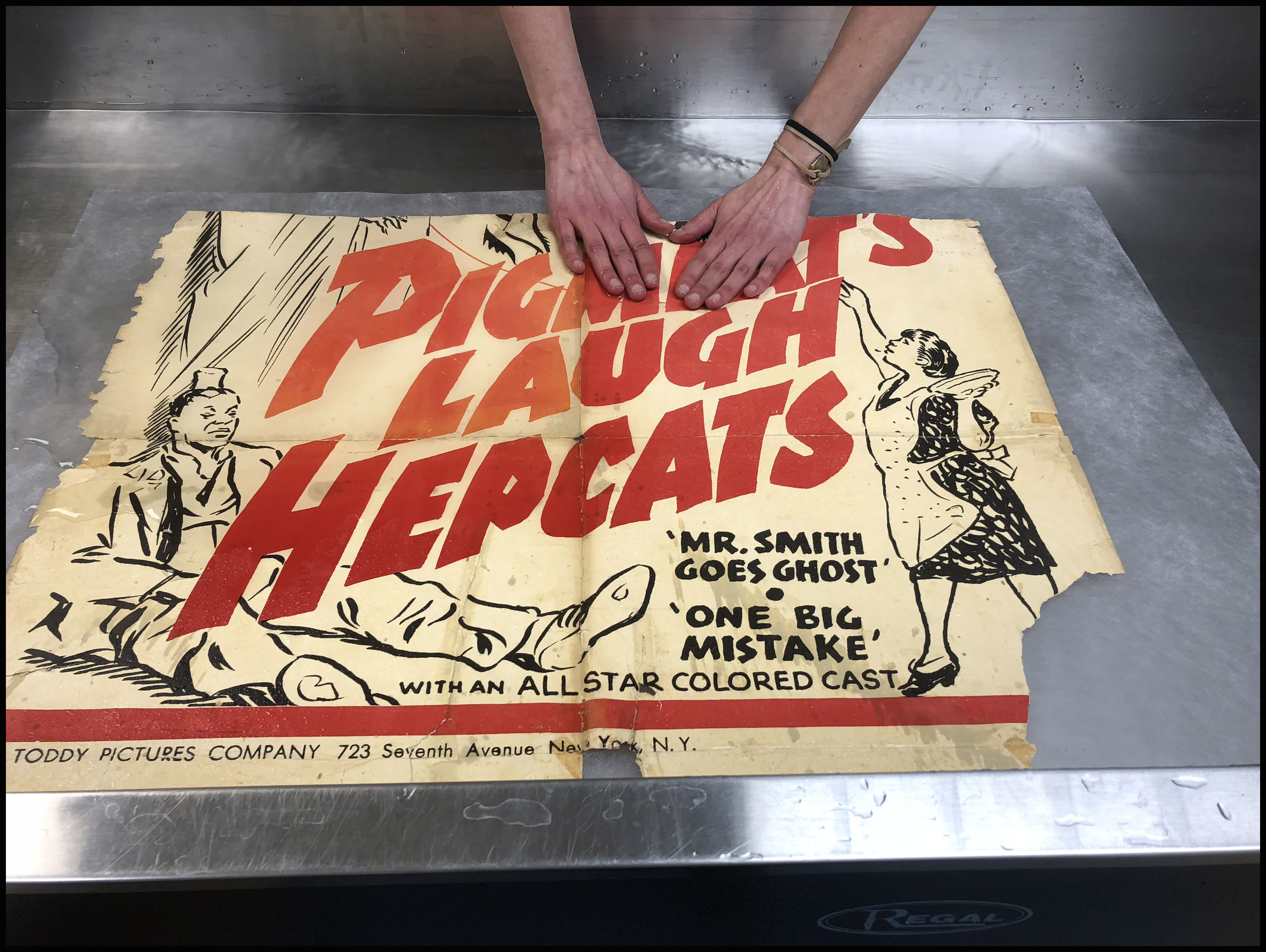Jill Iacchei and Michele Hamill
Cornell University Library features a growing number of archives documenting contemporary, musically based cultures such as punk, Hip Hop, black metal, and Latin salsa. Working in the Conservation Lab, I have had the privilege of working with many of these collections, which often contain a fascinating mix of photographs, flyers, artwork, and LPs. A recent addition is the poster shown below promoting the 1947 film short “Pigmeat’s Laugh Hepcats” starring Dewy ‘Pigmeat’ Markham (1904-1981).
This poster recently arrived in Cornell Library’s Division of Rare and Manuscript Collections (RMC) as part of their efforts to document 20th century music and culture. It advertises a 1947 film featuring Pigmeat Markam, whose popular 1968 single “Here Comes the Judge” is frequently cited as a precursor to Hip Hop.
Before arriving at CUL, the poster had been folded multiple times, resulting in deep folds, some splitting and torn. Rubber-based and acrylic pressure sensitive tapes had been used to reinforce these areas that had split or torn. Tape may go on clear at first, but deteriorated rubber-based tapes stain the paper a disfiguring amber color. The edges of the poster had many small losses and tears and the lower right corner was fully detached. Overall, the poster had yellowed in appearance and had some surface dirt.
The poster was brought to the Conservation Lab to fill and stabilize the numerous edge tears and losses, reduce the dark staining caused by rubber-based tape residue, to slow deterioration of the support with aqueous treatment, and to be housed in a way that would offer support, prevent further damage, and facilitate access.
The poster was first surface cleaned with smooth sponges to reduce dirt—this step is necessary before any aqueous or chemical treatment so surface dirt isn’t trapped in the paper support. The plastic carriers of the tape were removed and adhesive residue was reduced mechanically. Discreet testing of the inks and paper support was then performed to determine what aqueous or chemical treatments may be possible. Testing showed the red and black lithograph printing inks were stable in water and that the paper support would absorb water readily, indicating that the poster would respond well to aqueous treatment. Testing also indicated that the tape adhesive residue and staining could be solubilized and reduced from the paper support using a polar organic solvent.
Shown above is this stain reduction in process to a corner that had separated from the remainder of the paper support. Areas of the poster with adhesive staining were placed on the suction table and masked off. The solvent was painted over these areas so the residue and staining would be pulled through the poster support onto the absorbent blotter below, thereby reducing the residue and associated discoloration. This improves the paper condition and brings your eye back to the poster design and away from condition concerns.
Next, the poster was treated aqueously to remove soluble degradation products within the support, in effect slowing further embrittlement and discoloration that these degradation products cause. The drying and flattening of the poster after the aqueous treatment reduced the deep folds, giving the poster back some of its intended original appearance—a smooth surface that showcases the striking design. The areas of loss and tears were stabilized with Japanese tissue toned to blend with the support, unifying the appearance of the poster. A polyester sleeve allows the poster to be stored and handled safely and securely.
Poster treatments can run the gamut of basic stabilization to more complex treatments such as this one, depending on condition, use, and importance. After treatment, this poster now joins the rest of RMC’s deep and growing collections documenting 20th century music and culture.
You can listen to Markham’s Here Comes the Judge here.




